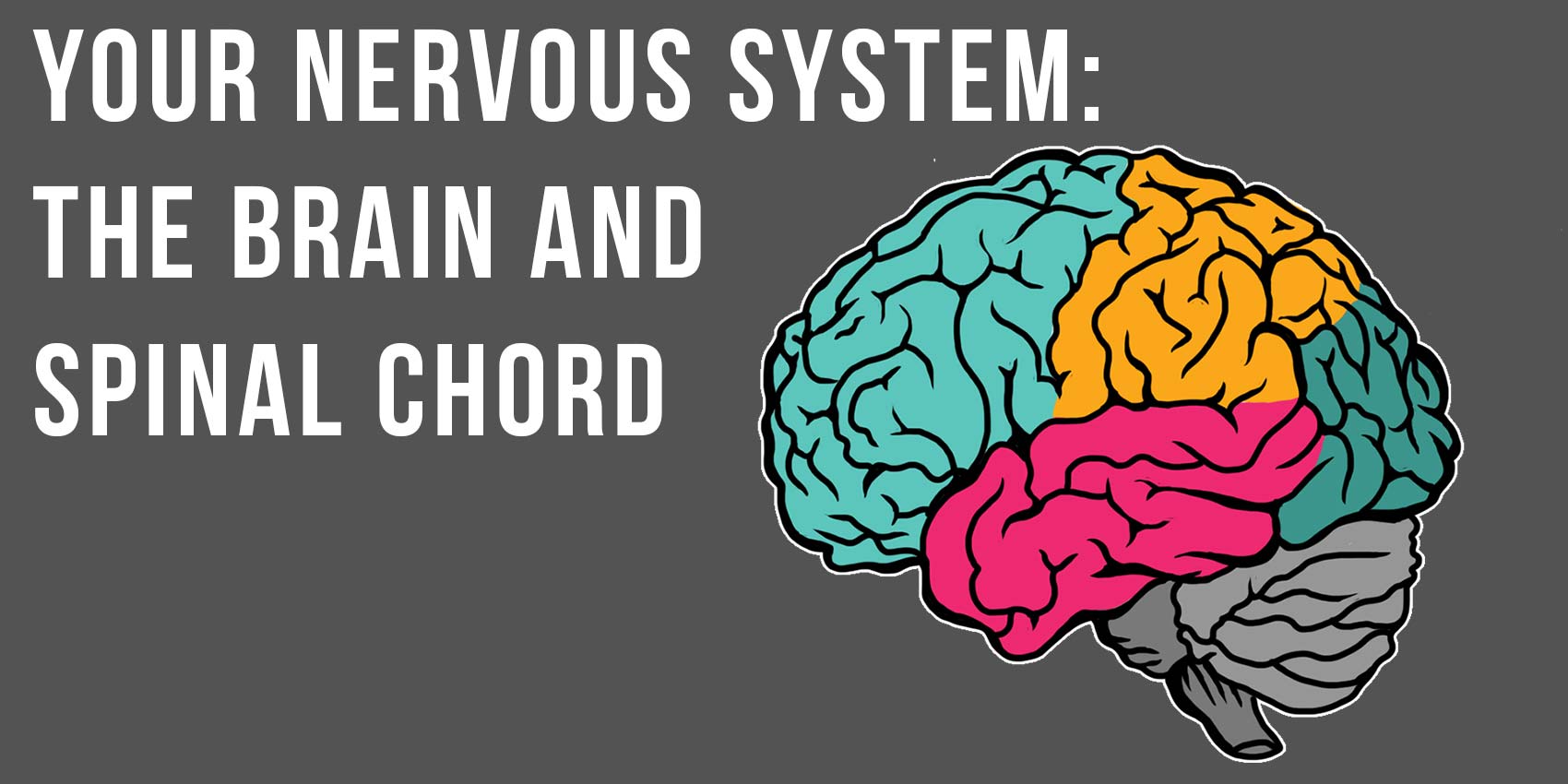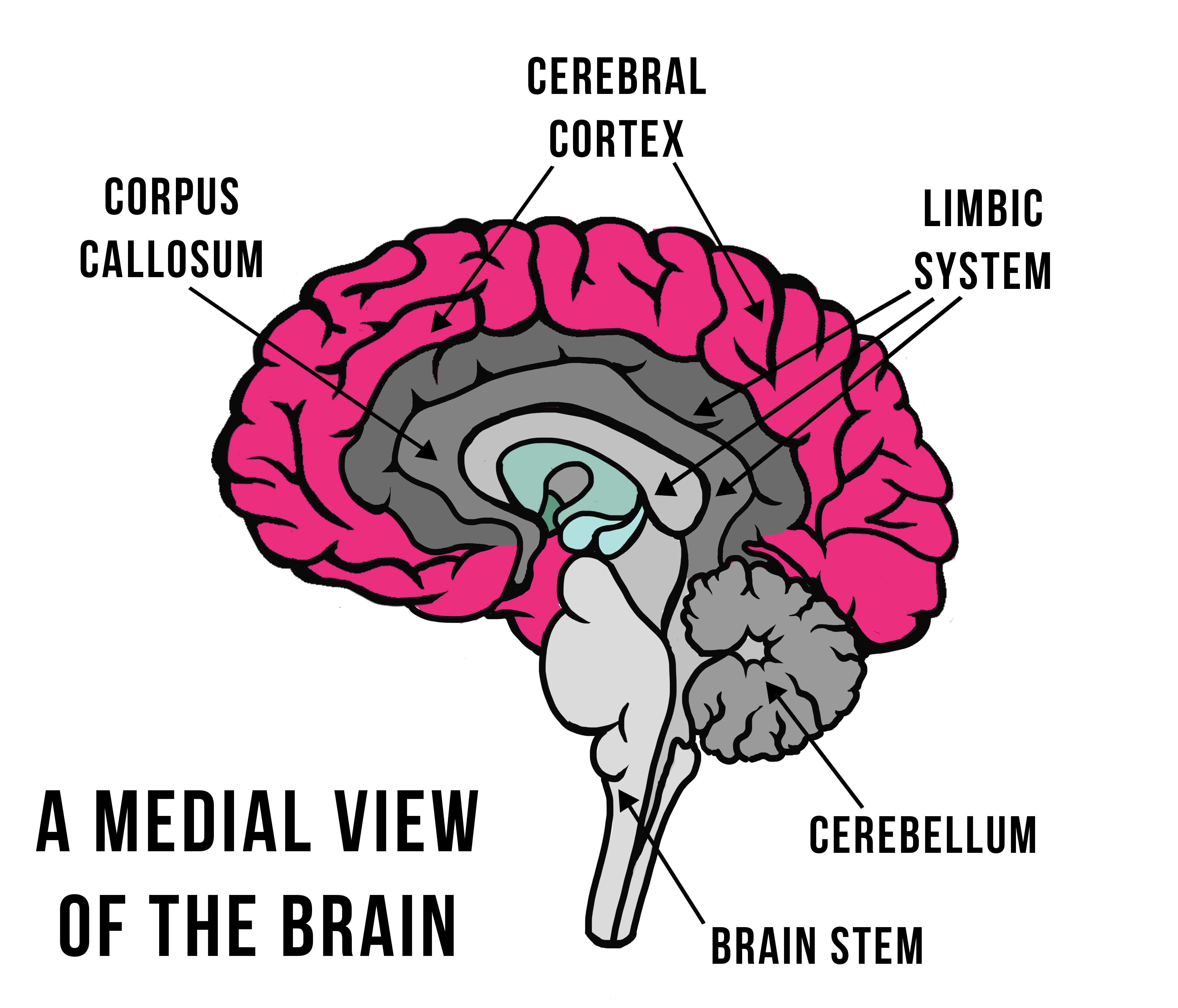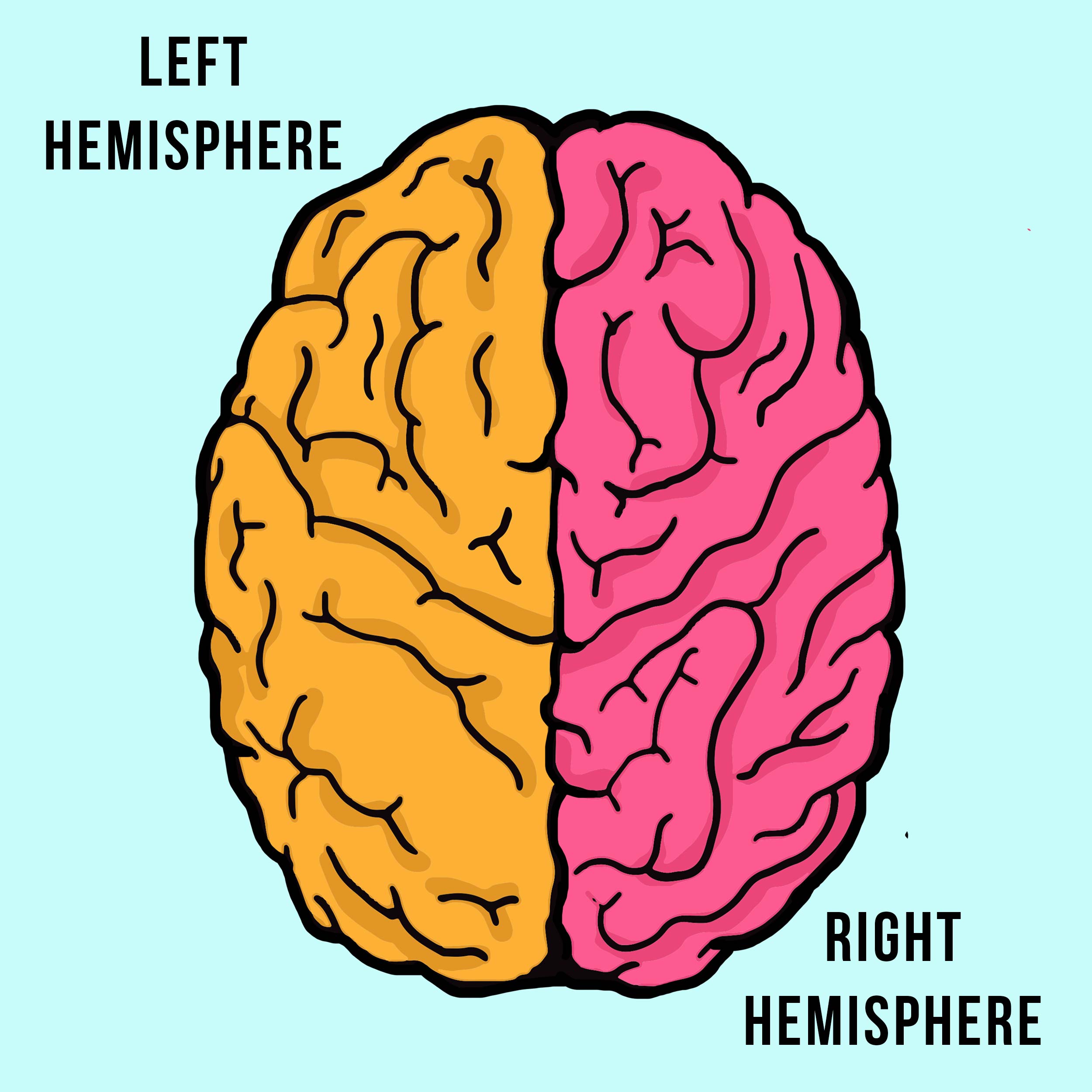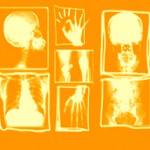08 Nov Your nervous system: the brain and spinal chord


DID YOU KNOW? The brain weighs 2% of your body weight but consumes 20% of the total circulating oxygen.
(Source: https://www.scientificamerican.com/article/why-does-the-brain-need-s/)
Your brain is part of your central nervous system (CNS) about which you just read in the previous post.
Your brain is made up of:
- the cerebral cortex (the outer layer where big thinking and processing takes place)
- the cerebellum (balance, vision, and motor—movement—coordination, including learning new movements)
- the brain stem (where automatic functions controlled by the autonomic—involuntary—nervous system live)

Your brain is HUGELY complex and HUGELY cool, and, as we keep telling you, your brain is developing right now at warp speed. In this picture are the main parts of the most incredible living “computer” on the planet housed right between your adorable and unique ears. We are going to start at the base and work our way up (BTW, if you are wondering, the picture shows a medial view of the brain—what’s in the middle. So it’s like slicing down the center and opening it up like you do with a melon.)
Your brain stem (at the very top of your spine) keeps track of all the neat stuff like keeping you conscious, the time, breathing and heartbeat. The stuff you don’t think about to do.
Your cerebellum, or “little brain,” is located right at the top, rear of your neck. It is responsible for motor (movement) coordination, posture and maintaining equilibrium (balance).
Your cerebral cortex is the outer layer of the brain—the pink folded stuff in the picture and it is responsible for more conscious, higher learning stuff like analyzing, thinking, processing language and so much more. Your cerebral cortex is divided into 4 lobes that each have a specific function (parietal, frontal, temporal and occipital). Your cerebral cortex also contains areas for motor and sensory functions.

DID YOU KNOW? Your cerebral cortex is divided into 4 distinct areas: The parietal lobe for visual info and processing language and mathematics; the temporal lobe for auditory processing; the frontal lobe for emotional expression, problem solving, memory, language, judgment, and sexual behaviors; and the occipital lobe for visual processing. (Source: Paula and Chris just know this stuff. Crazy, right?)
Your limbic system, located deep inside the brain, below the cerebral cortex and above the brain stem, is often referred to as the “emotional brain.” The limbic system is home to specific areas that have purposeful functions. These systems all work together to keep you alive! Of note, is the amygdala, which controls our responses to the emotions we feel and perceive. It is located near the brain stem. So when the brain stem receives sensory input (like a movie trailer for example), it sends that info to the amygdala for interpretation. If the information creates emotions like pleasure and interest, the amygdala says, “That movie trailer looks good! Let’s release some feel-good chemicals like dopamine and serotonin and get this party started! I’ll send some serious neural energy up to the cerebral cortex and learn what we need to learn to improve our species (or just get to the movie)!”

DID YOU KNOW? Your brain is divided into two hemispheres—left and right. They are linked by the corpus callosum—a large bundle of nerve fibers. Oddly, what you do on the right side of your body is controlled with the left side of your mind, and vice versa.
However, if the brain stem receives some dangerous information your amygdala will have a different interpretation like, “Holy schnockers. There is danger down that dark alley!” And immediately your heart may race, your skin may prickle and your tummy may turn. You are beginning the fight or flight response. Your amygdala might send neural energy to your lower areas so you can run away from danger if necessary (flight), or stick around if you feel you can take on the threat (fight), or not make a move so you won’t be seen (freeze). In short, your amygdala is responsible for actions that keep you alive in the face of danger AND for taking interesting information and moving it up the the cerebral cortex if that information can be helpful to you (like getting you out to a rocking movie).
The limbic system is home to other cool areas like the hippocampus (which turns short-term memory content into long-term memory) and your hypothalamus (which is in charge of maintaining homeostasis—definition below) and your thalamus (which relays sensory and motor information to different areas of your cerebral cortex—for example if you tough a hot stove your thalamus receives the hand sensation of “so so hot!”, and tells the motor cortex to move that hand. In short, your thalamus is the central relay station for all the sensations that your body receives.)
Homeostasis: is your body’s balanced state. It’s like your happy place when all is good: not too hot, not too cold, not hungry or thirsty, yet not so full you want to barf. Thirst, for example, is your body’s signal that you need more hydration, hunger that you need more nutrients to operate.
(Source: https://www.medicalnewstoday.com/articles/312628.php)

DID YOU KNOW?: You have five senses: touch, sight, hearing, taste and smell. Smell is one of the most primitive senses. The part of the brain that processes smell information from your nose is located within the limbic system which makes it the sense that is directly connected to the subconscious layers of the mind.




Post Question:
What’s your favorite thing to do and what senses are involved when you do it?
Answer the post question here
What's being said